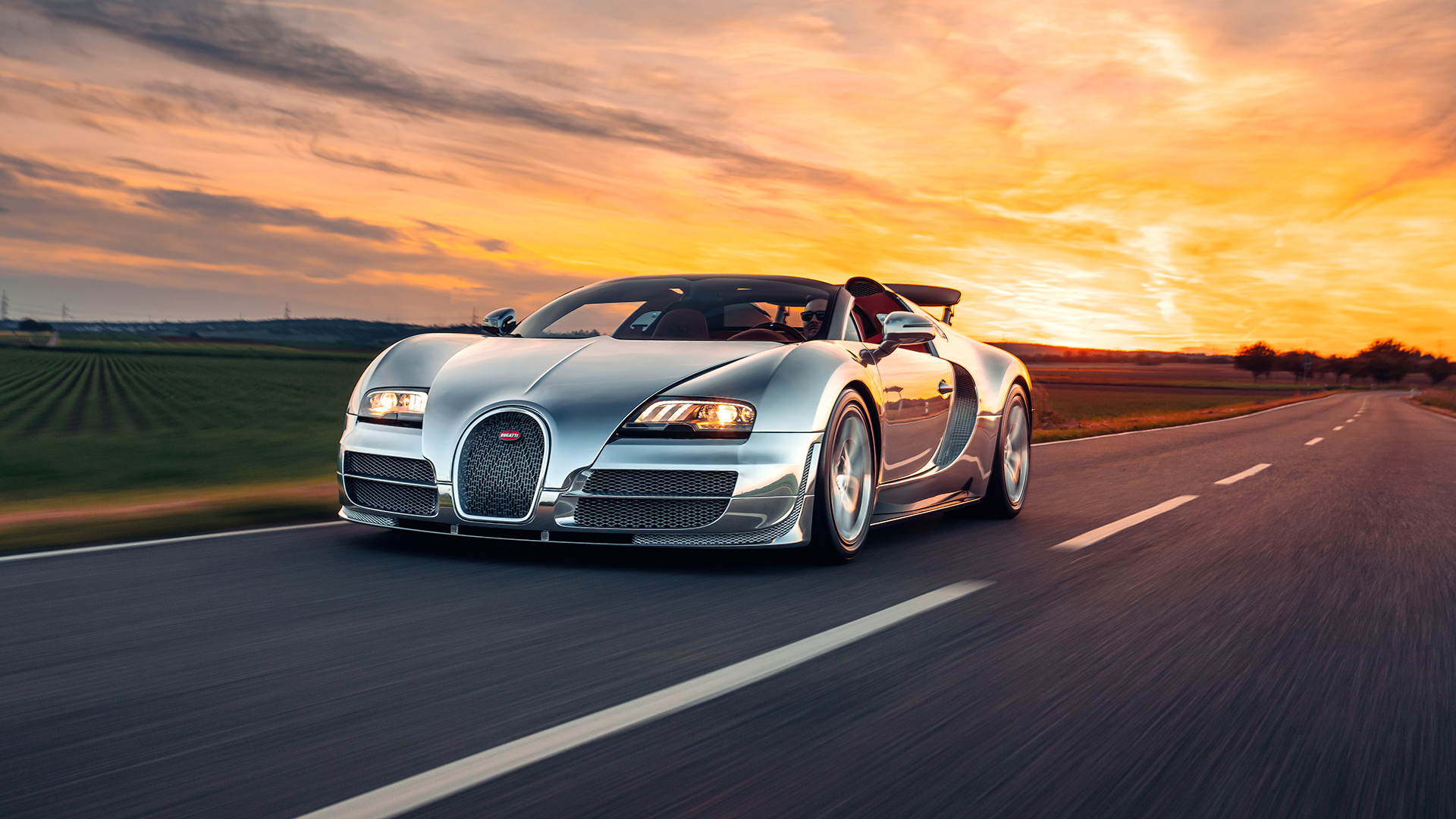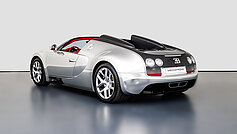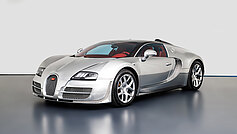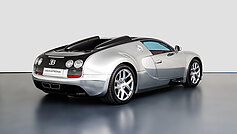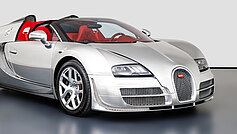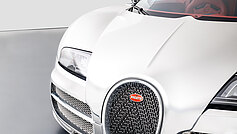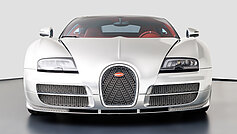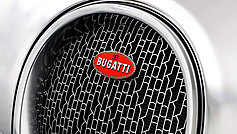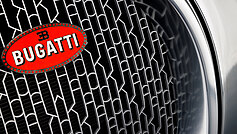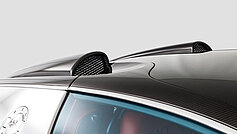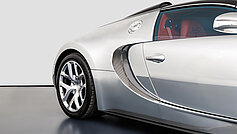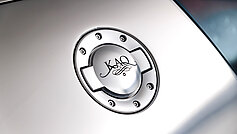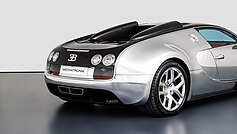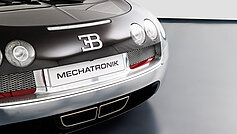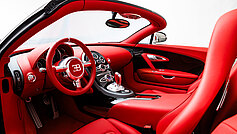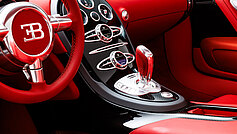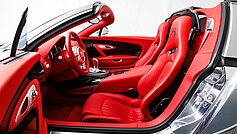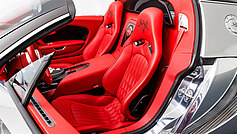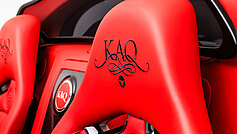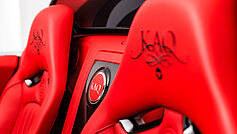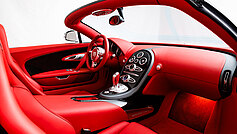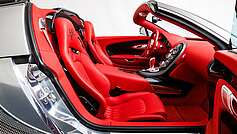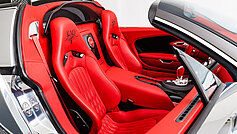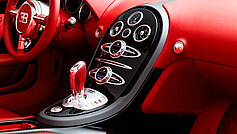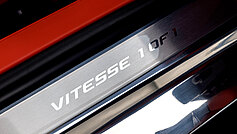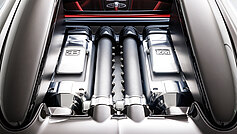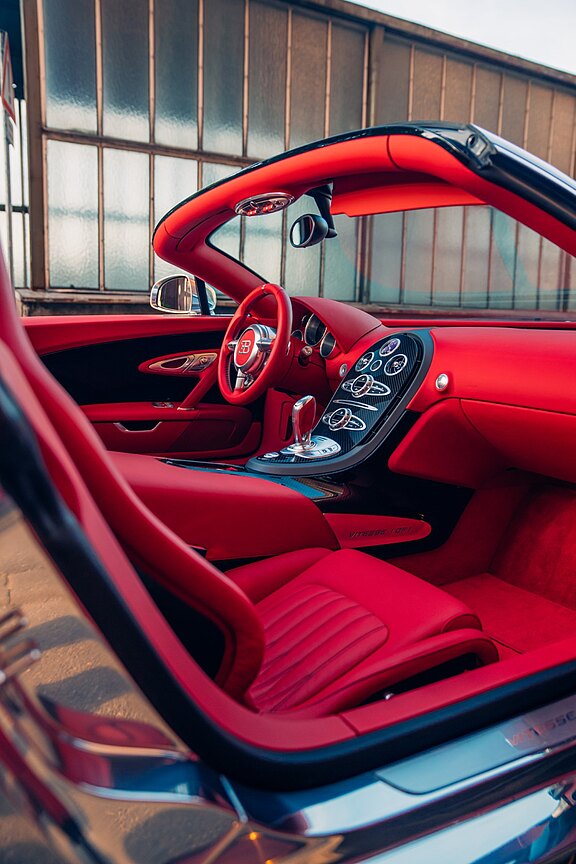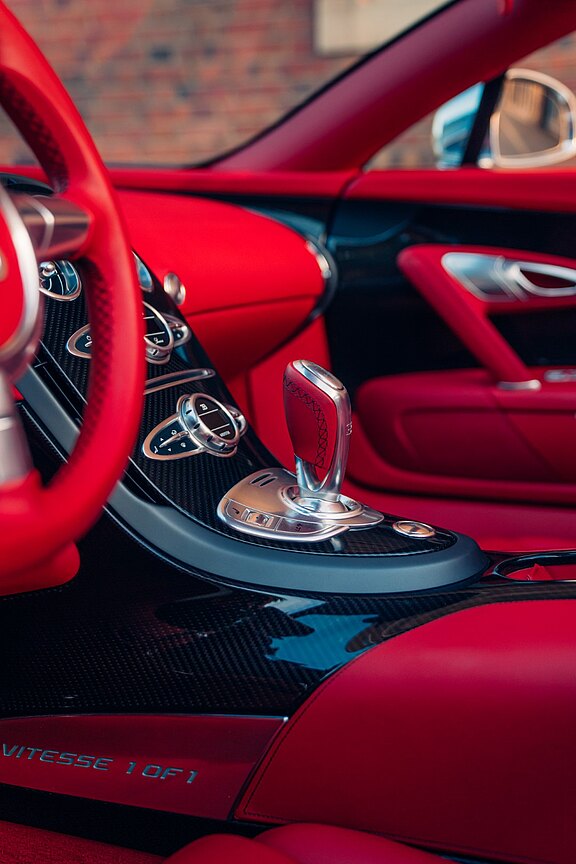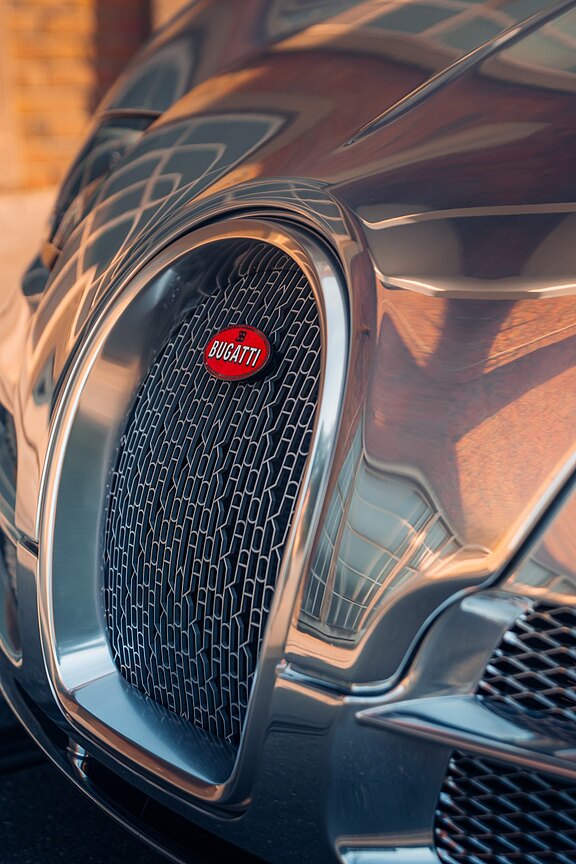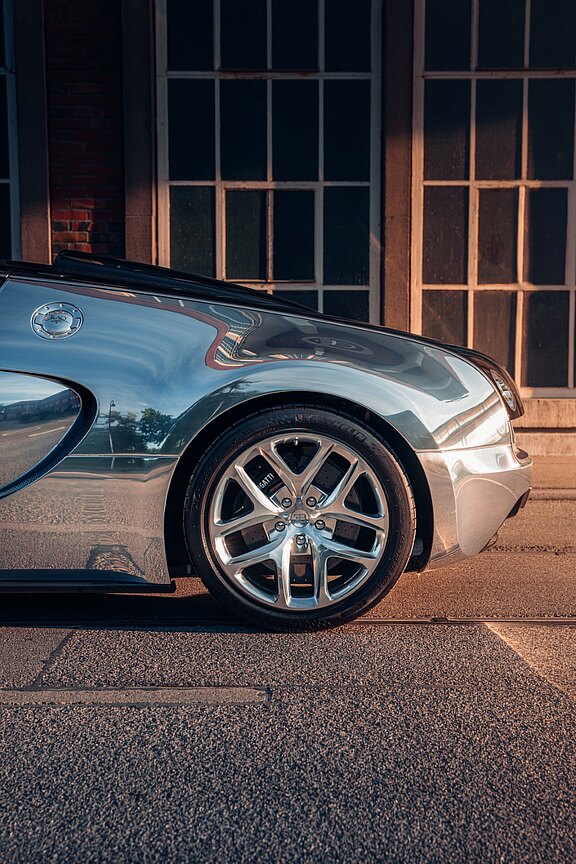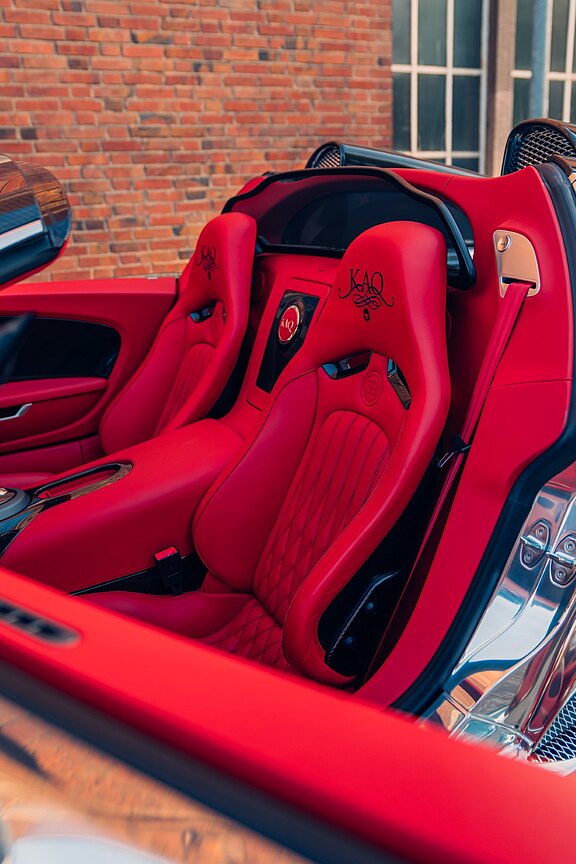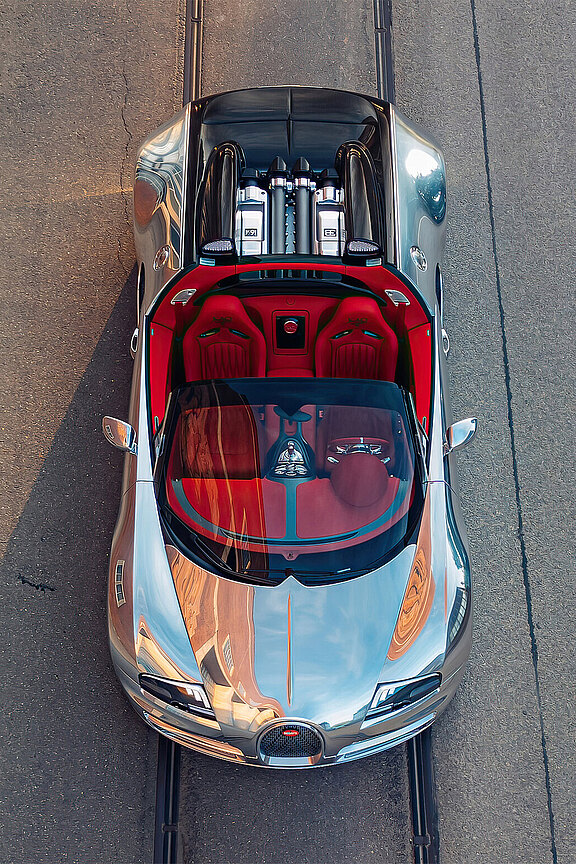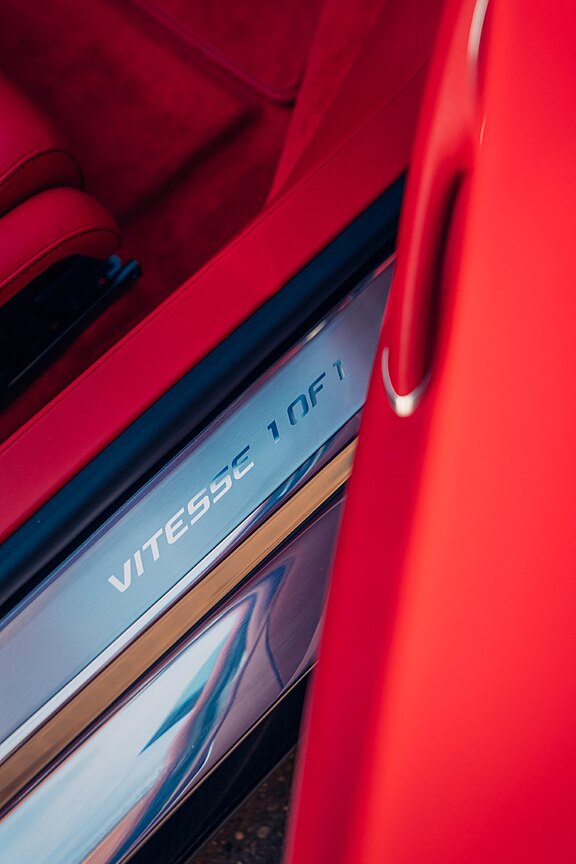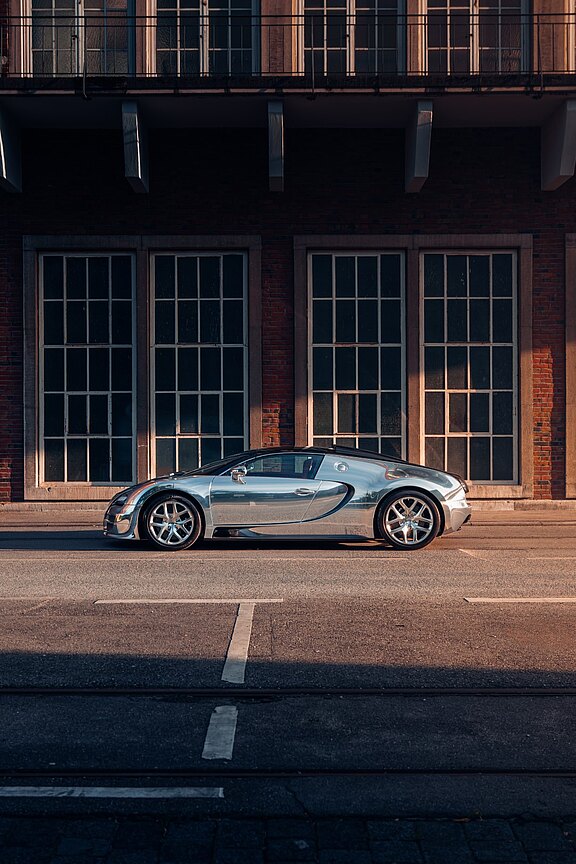Bugatti Veyron Grand Sport Vitesse
- Documented to be the most elaborate and expensive Bugatti Veyron ever built
- Bodywork out of milled and then polished aluminium - The only Veyron ever built in this unique way of coachbuilding
- Complete one-off from first ownership
- Only 750 KM driven since delivery
- Extensively documented
- Presented to the public for the first time
| Year: | 2015 |
|---|---|
| Paintwork: | Aluminium polished |
| Interior: | Leather Carmine red |
| Gearing Type: | Automatic |
| Mileage: | 750 KM |
|---|---|
| Power: | 1.200 HP |
| Fuel*: | Petrol |
| Price: | On request |
* Consumption: 23.1 litres in accordance with DIN 70030, determined at 3/4 of the maximum speed, maximum 110 km/h, with a 10 % surcharge
GET IN TOUCH WITH YOUR CONTACT PERSON FOR THE Bugatti Veyron Grand Sport Vitesse now.
The Bugatti Veyron
To say that the Bugatti Veyron caused a sensation when it was launched in 2005 would be a massive understatement; this was a car that not only rewrote the rules for super sports cars, but tore them up and started a new era. The fact that the Veyron was the dream of one man was all the more remarkable: Ferdinand Piech, Chairman of the Board of Management of the Volkswagen Group, which had taken over the Bugatti brand in 1998. Piech's ambition was to create a car with 1,000 horsepower, a top speed of 400 km/h and a price tag of 1 million euros. The realization of Piech's dream proved to be an extremely difficult undertaking, even for a company with the technological resources of Volkswagen, and the result would not see the light of day until seven years later. The first concept car designed by ItalDesign boss Giorgetto Giugiaro - the EB118 - was unveiled at the Paris Motor Show in 1998 and featured permanent four-wheel drive and a Volkswagen-developed W18 engine. Over the next few years, a handful of variations on the theme were shown at international motor shows before the concept finally crystallized in 2000 in the form of the Veyron EB 16.4. The Veyron EB 16.4 was designed in-house at VW by Hartmut Warkuß and featured an engine with 16 cylinders and four turbochargers - hence the name “16.4”. It was named after the Bugatti development engineer and racing driver Pierre Veyron, who, together with his co-driver Jean-Pierre Wimille, had won the 24 Hours of Le Mans for the French manufacturer in 1939. However, development was far from complete and it would be another five years before production could begin. During this time, an incredible 95% of the components were either modified or redesigned. The 8.0-liter W16 engine, which was two close-angle 4.0-liter V8s sharing a common crankcase, met Piech's requirements - just barely - and produced a maximum output of 1,001 hp and 922 ft/lb of torque, figures that would embarrass a current Formula 1 car. With a curb weight of 1,888 kg (4,162 lb), the Veyron had an astonishing power-to-weight ratio of 523 hp per ton. The task of transferring this massive power to the ground was undertaken by a permanent four-wheel drive system with dual-clutch seven-speed transmission built by the British company Ricardo. To achieve the Veyron's phenomenal top speed, Michelin developed special PAX tires with run-flat properties. Piech had specified a top speed of 250 miles per hour, and the Veyron did not disappoint, with more than one tester - including Top Gear's James May - exceeding the target by several miles per hour. With a base price of 1,250,000 dollars (1,225,000 euros), the Veyron also clearly exceeded Piech's target. To maintain stability at such high speeds, the Veyron has a few aerodynamic tricks up its sleeve: a hydraulic system lowers the car at around 140 mph, whereupon the rear wing deploys and increases downforce. However, if the driver of the Veyron wants to reach a speed of more than 343 km/h, he or she must select top speed mode (from a standing start) before joining a very exclusive club.
The Grand Sport Vitesse
The Bugatti Veyron 16.4 Grand Sport Vitesse develops a maximum torque of an impressive 1,500 NM (at 3,000-5,000 rpm) from the 8-liter W16 engine. The maximum output of 1,200 hp is available at 6,400 rpm. This data enables a 0-100 sprint of 2.6 seconds and even better pulling power. With a top speed of 415 km/h, the all-wheel drive Vitesse is the fastest roadster ever built in series production to date. The top speed is driven under special safety precautions on closed-off tracks. In “normal” driving mode, the Grand Sport Vitesse is electronically limited at 375 km/h. The increase in power of 199 PS compared to the Grand Sport is achieved primarily through the use of four larger turbochargers with larger intercoolers. In addition, Bugatti has comprehensively reinforced all drivetrain components in order to transmit the immense power safely and permanently. In particular, the transmission ratio of the 7-speed dual-clutch gearbox has been adapted to the new conditions. Thanks to the use of larger turbochargers and a general reduction in exhaust back pressure, fuel consumption was reduced slightly despite the increase in power. The fuel system with a 4-pump tank was adopted from the Super Sport chassis. At the front and rear, numerous aerodynamic measures from the Super Sport were adapted for the Vitesse, such as the front section, where larger air intakes were adopted from the Super Sport. The two central air intakes to the left and right of the Bugatti radiator grille are divided horizontally by a bar. The lowest air slot extends laterally into the wheel arch and gives the exceptional sports car an extremely confident appearance. Below this air intake is a new, visually filigree front spoiler with a design similar to the front splitter used in motorsport. Also new: the xenon headlights, which have been improved in line with the Super Sport and now have a block housing. The rear end, also derived from the Super Sport, is characterized by a double diffuser and a centrally positioned double exhaust pipe. Typical for the Grand Sport and therefore also for the Vitesse are the two air scoops on the left and right of the engine cover, which have been redesigned for the Vitesse. As with the Super Sport, a full carbon monocoque is also used for the Vitesse, which achieves an extremely high torsional rigidity of 22,000 NM per degree with maximum passive safety. The outer skin of the Vitesse is made entirely of carbon fiber and was optionally available in painted visible carbon fiber.
Chassis 8.100
was ordered directly from Bugatti in Molsheim in 2014 by its first and only owner. He was one of Bugatti's most important customers at the time. The idea behind this Veyron Grand Sport Vitesse project was to create the most elaborate and fascinating version of what was possible at the time. The finished Bugatti was to be the most special Veyron and the most extreme and unique version ever built. The designers, which included head of design Achim Anscheidt and color and trim designer Laurent Chevalley, developed an idea for the customer that would not only make perfect use of the proportions of all the different variants of a color split of the Veyron, but also meet the customer's request for a very clean design using original materials, preferably without paint, inspired by the Veyron 16.4 Pur Sang. It was discussed that the color split of the Pur Sang's body and similar materials would provide the most stunning result, and that the shape of the car would benefit most when combined with an eye-catching, contrasting interior. Only 5 examples of the original Pur Sang, the first special edition of the Veyron in 2007, were built. These all-aluminum and carbon versions were built with a carbon center section and polished aluminum sides. For homologation reasons, some of these cars did not have an aluminum front bumper, but a painted one. Due to the size of some of the side panels, the aluminum parts were welded together. These weld seams were polished by hand, but were still visible. For the Bugatti Veyron 16.4 Grand Sport Vitesse Chassis 8.100, this was not an option for the owner. The customer wanted the front bumper to be made entirely of aluminum, and he also did not accept the side panels being welded together. His order form specified that all parts should be made from a single piece of aluminum. This meant that a special CAD program had to be written by the Bugatti engineers to mill all the aluminum parts from a single block. The calculations were done at Bugatti Engineering in Wolfsburg, Germany, and it was determined that blocks of over 20 tons of aluminum would be needed. It turned out that the production costs for this car would be astronomically high and also far above the sales price originally agreed with the customer. So Bugatti decided to confront the customer with the sad news that his configuration had been withdrawn and that he would have to change the configuration of the car to a more practical version for production. Bugatti wanted to cancel the order and withdraw from the contract for the reasons mentioned. As mentioned, the customer was one of Bugatti's most important customers at the time. He was also the original customer of the “Bugatti Centenaire” and also ordered one of each of the six Bugatti Grand Sport Vitesse of the “Legends” series: Jean Pierre Wimille, Jean Bugatti, Meo Costantini, Rembrandt Bugatti, Roland Garros and the last car - Ettore Bugatti. He was the only customer to buy all six examples of this special series - three of each were built. So not only did he threaten to cancel all his standing orders (six Legends and several SuperSport editions), he also threatened not to buy any more cars from Bugatti Automobiles S.A.S. if this all-aluminum car was not built to the specification he had originally accepted after discussing the details with the Bugatti designers. Any form of compromise was categorically rejected. So it was finally decided to build the car to the original specification, with the then extremely difficult 6K 90 degree woven carbon parts and the body panels milled from solid and polished.The car was completed in the spring of 2015 and was the most extreme and time-consuming Bugatti Veyron version ever built. The total amount of options of chassis 8,100 were higher than the list price of a “standard” Bugatti Veyron Grand Sport Vitesse. Without doubt, this car marks the pinnacle of Bugatti Veyron manufacture and is the highlight of any Bugatti collection. Our sales staff will be happy to answer any detailed questions you may have.
Please note that vehicle viewings are only possible by prior appointment.
